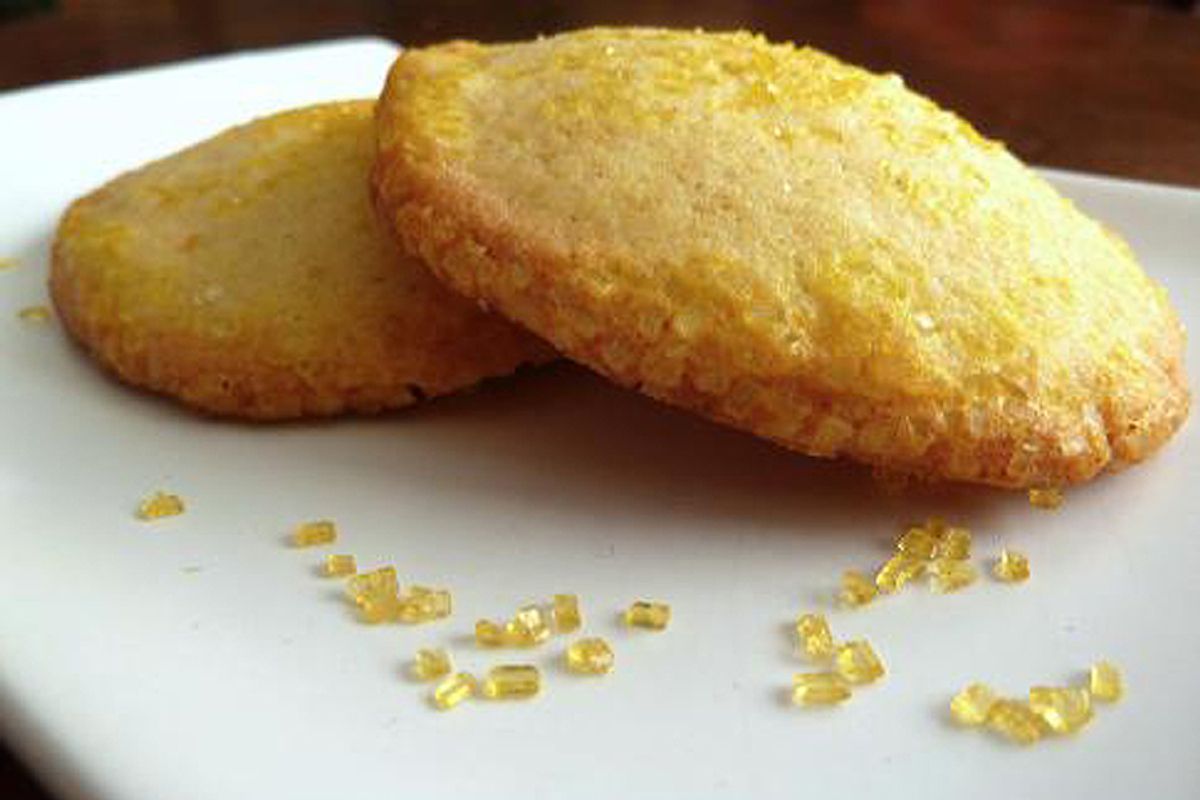I don't like to lie to my children, I really don't. Lying is wrong, plus I have never been able to keep my own stories straight. So what do I do when my little ones ask me if Santa is real? I say yes. I know, many of you would say that this response constitutes lying. But I love seeing my kids' excitement on Christmas Eve when they leave a plate of cookies for Santa, along with a handwritten note and a drawing. It won't last long, their belief in Santa, and I want to hold onto this innocent part of their childhood for as long as I can.
Santa's cookies usually include a combination of store-bought and homemade. The holidays bring out everyone's inner baker. Some families have traditional recipes handed down through the generations. For others, it may be as simple as slicing and baking pre-made refrigerated cookie dough. Some communities host elaborate cookie exchanges, and this can lead to the establishment of temporary cookie-baking sweatshops in previously peaceful kitchens. Baking Christmas cookies is all about sharing and tradition, and a whole lot of butter, sugar and flour.
Instead of baking cookies for Christmas, the Mexican tradition is to make and share tamales. It's a laborious task best shared by many hands, and what better excuse is there to sit around for hours sharing gossip? The traditional Christmastime tamale-making party is known as a tamalada navideña. My fellow SKC enthusiast, Gavin Fritton, shared an excellent depiction of the tamale-making gatherings in his family. In Mexico and in other parts of Latin America, tamales are eaten throughout the year, but they have a special place during the Christmas season. They are traditionally eaten during the religious rituals known as posadas, the reenactments of Mary and Joseph's journey to Bethlehem that take place in the nine days leading up to Christmas Eve. They are also eaten on Epiphany, or El Dia de Reyes, which follows Christmas.
For years, I've been the enthusiastic recipient of a one-way Christmas tamale exchange with my Mexican-America neighbor, Teresa. You may remember her from when I wrote about her recipe for the best rice pudding on Earth. In addition to being honorary Abuela to my girls and an ever-ready and experienced source of advice, Teresa is a wonderful cook of homestyle Mexican food. It's hard to be grumpy when the doorbell rings before 8 o'clock on a Sunday morning when it's Teresa, bearing a piping hot plate of just-cooked chilaquiles. And that's on an ordinary day.
Every Christmas, she cooks up dozens of tamales, both savory and sweet. Savory tamales, such as the ones Teresa fills with pork in a red chile sauce, are the kind most available in restaurants. In Mexico and other parts of Latin America, the variety of fillings is infinite. They may contain meat, chiles, cheese, vegetables and any combination thereof. The sweet ones, called tamales de dulce, are less common, and can be as simple as an unfilled sweetened corn tamale, or perhaps studded with plump, juicy raisins. Sweet tamales, the kind we can't buy even at our local tamale specialist, San Francisco's Roosevelt Tamale Parlor, are my favorite. When we get our bags of tamales from Teresa, we know what we're having for dinner and dessert.
The tradition of making and eating tamales is alive and robust in 2010, but tamales have been around for a long time. Historians trace their origins to Mesoamerica as early as 8000 to 5000 BCE, popular at the time of the Aztec and Maya civilizations. The essence of a tamale is its ground corn filling, called masa, milled from limewater-treated corn, or hominy. The ground, dried corn is combined with lard and broth or water to make a dough, which is then filled and wrapped in a corn husk (or sometimes a banana leaf) before being steamed. This is the basis for both savory and sweet varieties. Sweet corn tamales, tamales de elote, capture the flavor of a fresh ear of corn without the distraction of other tastes.
For my Christmas cookie this year, I decided to try to encapsulate the essence of a sweet corn tamale into a cookie. Teresa and my little tasters were ecstatic with the result, which tastes something like a corn muffin but better, because it's a cookie. These have chewy centers and crisp edges, to satisfy both camps of cookie eaters. To gild this lily, I've rolled the edges in golden sugar, pretty enough to decorate a Christmas tree, and special enough to leave for Santa.
Sparkly sweet corn cookies
Ingredients
- ¾ cup all-purpose flour
- 1 cup corn flour -- I used Bob's Red Mill brand, which is found in many supermarkets. (Do not confuse with corn meal, masa or corn starch)
- ½ teaspoon baking powder
- ½ teaspoon salt
- 1½ sticks unsalted butter, at room temperature
- 1 cup sugar
- 2 large eggs
- ½ teaspoon vanilla extract
- garnish: golden yellow sanding (coarse) sugar
Directions
- Preheat oven to 350 degrees.
- Sift first four dry ingredients together.
- In a separate bowl, cream butter until soft, then add sugar and beat until fluffy. Add in eggs, one at a time, and then add vanilla.
- Combine wet and dry ingredients into a soft dough. Spread dough onto a sheet of plastic wrap, then roll into a 12-inch log (about 2 inch diameter). Chill wrapped dough log in refrigerator until firm, at least 4 hours.
- After dough has been chilled, sprinkle work surface with sanding sugar. Unwrap chilled dough log and roll several times in sanding sugar to coat.
- Slice coated dough log into 1/2 inch slices. Place dough slices onto ungreased baking sheets, sprinkle with additional sanding sugar if desired, and bake for 12-15 minutes until edges are golden. Cool completely.



Shares